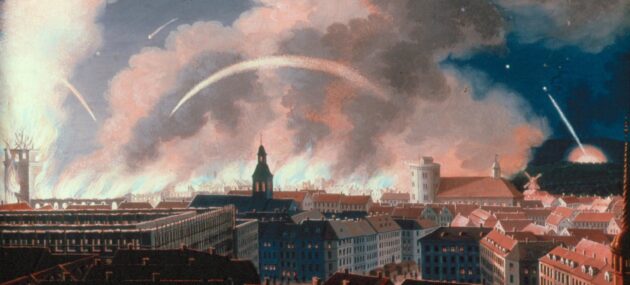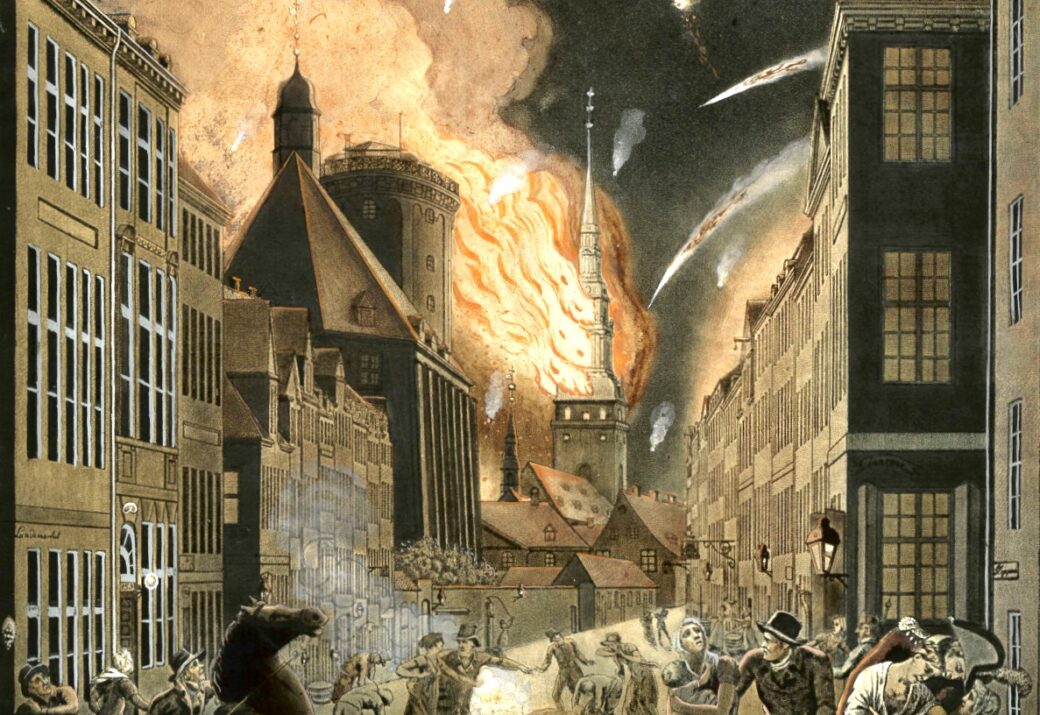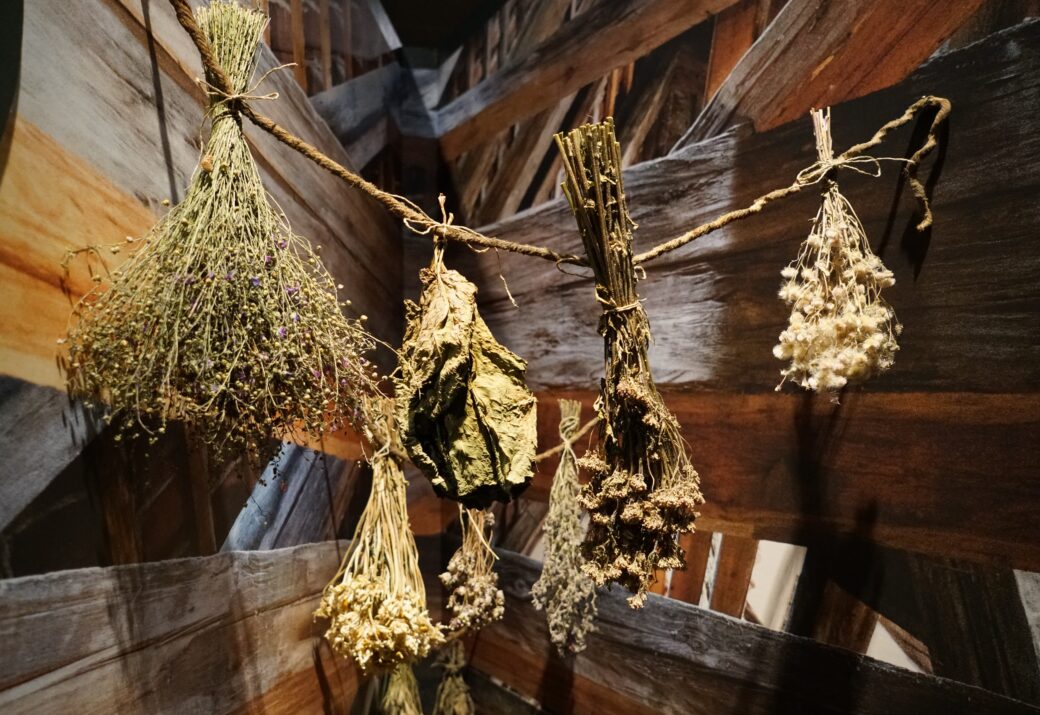This website uses cookies so that we can provide you with the best user experience possible. Cookie information is stored in your browser and performs functions such as recognising you when you return to our website and helping our team to understand which sections of the website you find most interesting and useful.

Rocket Science Seen from the Round Tower
There is an old Danish saying that advices one never to go back to a dud. Nevertheless, this was exactly what the Danish second lieutenant Andreas Anton Frederik Schumacher (1782-1823), who came from Holstein, did on a September day in 1807. And the fact is that neither the military history, nor the history of science, nor the Round Tower’s history would have been the same if he had listened to the old advice.
“It has been conjectured that both thousands and tens of thousands of Congreve rockets were launched during the bombardment that should persuade Denmark to surrender its substantial fleet to Britain”
The dud he went back to was one or two of the so-called fire arrows that were shot over Copenhagen during the British bombardment of the city from the 2nd to the 4th of September 1807. In addition to the bullets, bombs and grenades that were normally used during bombardments, something new had found its way to the raid, namely the fire arrow or the Congreve rocket as it is also called. The rocket was named after its inventor, the British officer William Congreve (1772-1828), who was present when it was launched over Copenhagen from a position in Frederiksberg.
Massive Havoc
The Round Tower was more or less spared during the bombardment, although a contemporary account reveals that the British forces “persistently tried to hit the astronomical tower and the observatory by launching over 400 bombs in their direction”. However, the situation was far worse for the rest of the city, which suffered massive havoc. After the bombardment William Congreve inspected the damages himself and nodded contentedly as a large part of them were ascribed to his new invention.
It has been conjectured that both thousands and tens of thousands of Congreve rockets were launched during the bombardment that should persuade Denmark to surrender its substantial fleet to Britain, which was at war with France, notwithstanding the fact that Denmark had actually preferred to remain neutral. In reality, only 300 rockets were launched. This was, however, still enough for some of them not to explode, which meant that second lieutenant Schumacher found one or two of them intact and after a couple of years tried to pick up the trick from William Congreve by making rockets himself.

Secrecy
Schumacher’s experiments, which King Frederik VI showed a personal interest in, took place on the small island of Hjelm in the Kattegat. Hjelm is known for being the refuge of the outlawed Marsk Stig who was convicted of murdering King Erik Klipping in 1287. It also seems to be its remoteness that attracted Schumacher, who exercised great care in making sure that no secrets about the production of the new rocket system got out. For instance, he never wrote anything down but kept it all in his head and the corps of soldiers that surrounded him only got to know some parts of the processes.
But Hjelm’s location could also be used for something else and this is where the Round Tower comes into the picture. For in 1815, Schumacher’s older brother, Heinrich Christian Schumacher (1780-1850), was appointed astronomy professor at the University of Copenhagen and thus head of the Observatory at the top of the Round Tower. The following year he suggested to the King, whom he, too, had a good connection to, that Denmark should make a contribution to one of the great scientific projects of the time. It was the so-called grade measurement, which sought to determine the Earth’s shape and size.
A Peaceful Utilisation
What is often mentioned as the first great achievement of Danish grade measurement is the longitude observations that were made in 1816 from Skagen, located at the very top of Denmark, to the Duchy of Lauenburg in Germany, which had just become Danish. Previous to this, the Schumacher brothers experimented with another measurement, which supposedly pleased His Majesty to such a degree that he ordered the measurement from Skagen to Lauenburg to be made.
“There is a direct link between the fire arrows that sizzled past the Round Tower in 1807 and such renowned institutions as the Danish Geodetic Institute”
Heinrich Christian Schumacher mentions the experiment in a brief notice in the first issue of his influential journal Astronomische Nachrichten (Astronomical News), which was published for the first time in 1823. Without further introduction he writes that, “Bekanntlich hat mein Bruder schon 1816 die Racketen zu Längenbestimmungen angewendet“ (“As is known, my brother already used the rockets for the measurement of longitude in 1816”), after which he elaborates, ”Er reisete nach Hielm, einer Insel bei Ebeltoft in Jütland, und ich beobachtete in Copenhagen auf der Sternwarte das Springen der Leuchtkugeln auf seinen Racketen“ (“He travelled to Hjelm, an island near the city of Ebeltoft in Jutland, and in Copenhagen at the observatory I watched the globes of fire on his rockets explode”).
To Altona
By observing the rockets midway between the Round Tower and the west coast of Jutland, Schumacher succeeded in measuring several degrees of longitude in what has been suggested to be perhaps “the world’s first example of rocket-based astronomy”. It is not evident, however, whether the peaceful utilisation of his brother’s rockets continued, and in any case the situation soon changed. In 1821, H. C. Schumacher moved to Altona, which was Danish at that time, and with the King’s approval he established his own observatory, which was completed in 1823. The same year his brother died.
In the meantime the grade measurements continued. Thus, there is a direct link between the fire arrows that sizzled past the Round Tower in 1807 and such renowned institutions as the Danish Geodetic Institute. Therefore, there might be good reason to revise the old advice about never going back to a dud. But it is still true that every cloud has a silver lining.


